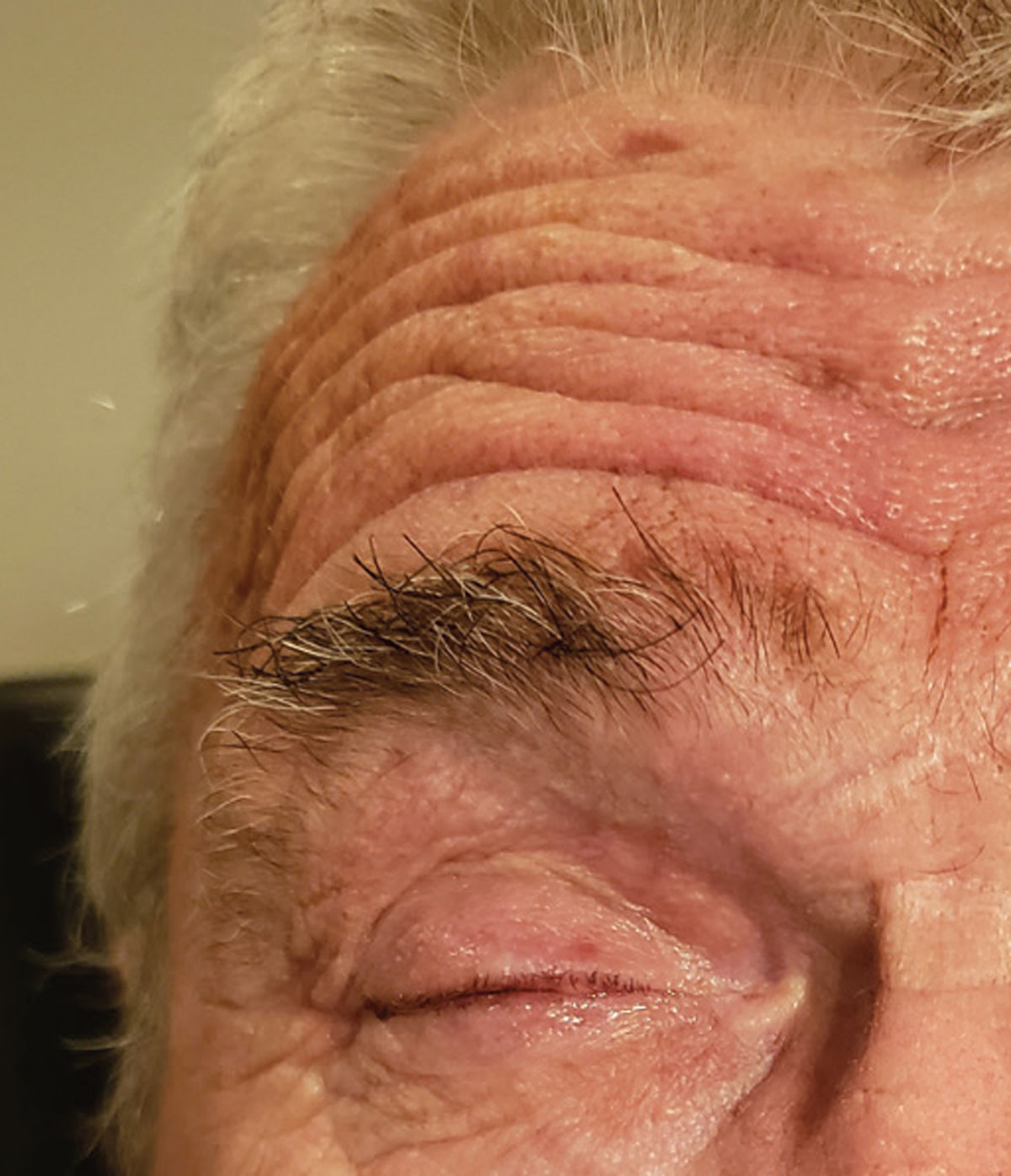 |
Q:
I have a patient that presented with shingles on his left arm and trunk three months ago. The skin lesions are resolving, but he is still in severe pain. What is his prognosis, and what can he do to alleviate the suffering?
A:
With nearly every adult in the United States exposed to the varicella zoster virus (VZV), the same virus that causes chickenpox, an individual has about a 30% lifetime risk of the virus reactivating and causing herpes zoster (HZ). Postherpetic neuralgia (PHN) is the most common complication, affecting 20% of patients.1-6
PHN, or pain that persists at least 90 days after the initial rash, can be described as severe burning, electric shock-like sensations or itching at the site of the original rash.1-3
“Many patients will suffer from a modest amount of pain during the acute phase only to be blindsided with excruciating pain weeks later when physically they appear to be healing,” says Taia DeLano, OD, of Columbia, MO. “Watch your older patients who have severe pain in the acute phase, ophthalmic involvement, a more severe eruption and underlying systemic conditions.”1
 |
| Even mild zoster lesions, as seen on the forehead, can cause severe PHN. Click image to enlarge. |
Acute Therapies
Chronic pain therapy should start with appropriate management of the acute phase of HZ. If possible, oral antivirals such as acyclovir (800mg five times a day for seven days) or valacyclovir (1g TID for seven days) should be initiated within the first 72 hours.3,4 While this doesn’t reduce PHN risk, it decreases the time that new lesions form while speeding up the time to lesions’ full crusting. It also reduces pain during the initial episode and reduces the pain’s duration by about 50%.1,3,5
Glucocorticoids, oral analgesics and nonsteroidal anti-inflammatory drugs are often used in conjunction with oral antivirals for patients in the acute phase with mild-to-moderate pain.1,3
Dr. DeLano also suggests a cool compress to the affected area, a simple yet effective therapy that can be implemented in-office or at home.
Chronic Therapies
Many times, severe pain will need to be managed with systemic treatments by pain management specialists. First-line therapies include antidepressants such as amitriptyline (initial dose of 10mg to 25mg orally at bedtime, increased by 10mg to 25mg per week to a target of 75mg to 150mg daily), and anticonvulsants such as gabapentin (300mg to 600mg three times a day). The latter can reduce pain by almost half, but the time needed to achieve this makes it less desirable.1,3,4,7
Topically, two options have been approved for PHN treatment, although evidence to support either is lacking. A 5% lidocaine patch can help with short-term pain control, and capsaicin 0.075% cream has been used but does not offer substantial relief for most.1,4,7
Opioids offer good pain relief in PHN; however, due to their common misuse, addiction and high side-effect profile, they are a third-line option.1,4,7
Newer treatments that warrant further investigation are more invasive. Botulinum toxin has been shown to offer relief for neuropathic pain. Neuromodulation allows for a more targeted approach and has shown promise in PHN prevention.2,7
“Prevention is key with HZ and PHN,” Dr. DeLano says. The recombinant adjuvant Shingrix (GlaxoSmithKline) is the two-shot vaccine that is much more effective and lasts longer than the Zostavax shot that is now off the market. Dr. DeLano says this vaccine is approved for adults 50 years and older, even if they have had Zostavax. Its two doses are more than 90% effective at preventing shingles and PHN. Protection stays above 85% for at least the first four years after vaccination.
Dr. Ajamian is the center director of Omni Eye Services of Atlanta. He currently serves as general chairman of the education committee for SECO International. He has no financial interests to disclose.
1. Saguil A, Kane S, Mercado M, Lauters R.Herpes zoster and postherpetic neuralgia: prevention and management. Am Fam Physician. 2017;96(10):656-63. 2. Han R, Guo G, Ni Y, et al. Clinical efficacy of short-term peripheral nerve stimulation in management of facial pain associated with herpes zoster ophthalmicus. Front Neurosci. 202;14:574713. 3. Tuft S. How to manage herpes zoster ophthalmicus. Community Eye Health. 2020;33(108):71-2. 4. Tyring SK.Management of herpes zoster and postherpetic neuralgia. J Am Acad Dermatol. 2007;57(6 suppl):S136-42. 5. Singh, Grisuna, et al. Recombinant zoster vaccine (Shingrix): a new option for the prevention of herpes zoster and postherpetic neuralgia. Korean J Pain. 2020;33(3):201-7. 6. Ernst E, Fialka V. Ice freezes pain? a review of the clinical effectiveness of analgesic cold therapy. J Pain Symptom Manage. 1994;9(1):56-9. 7. Shrestha M, Chen A. Modalities in managing postherpetic neuralgia. Korean J Pain. 2018;31(4):235-243. |

